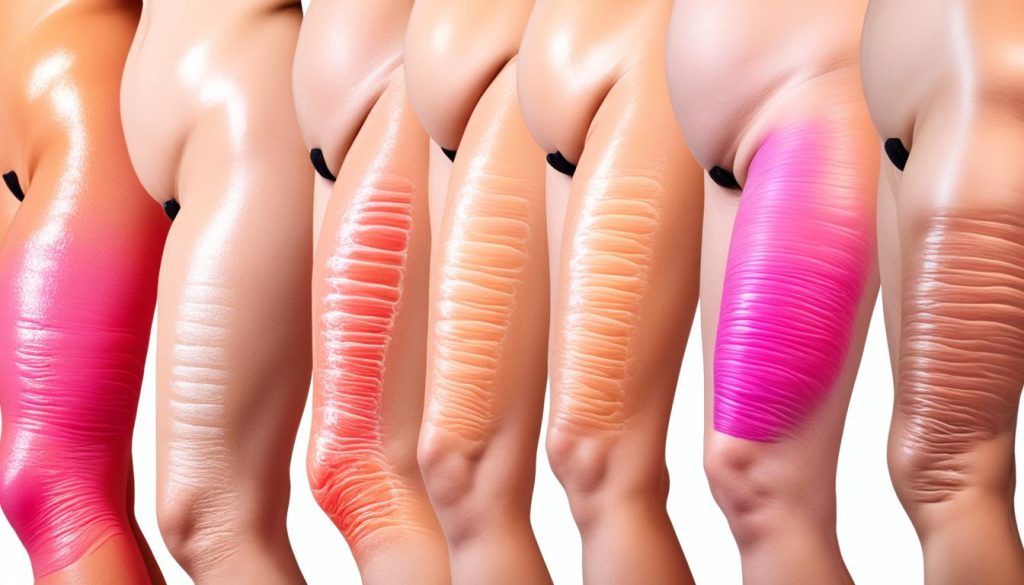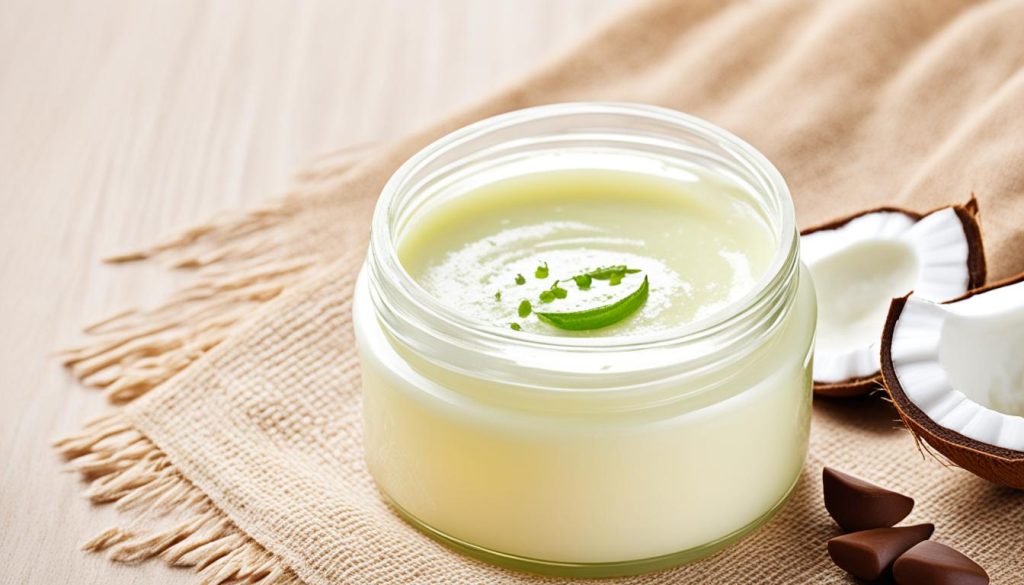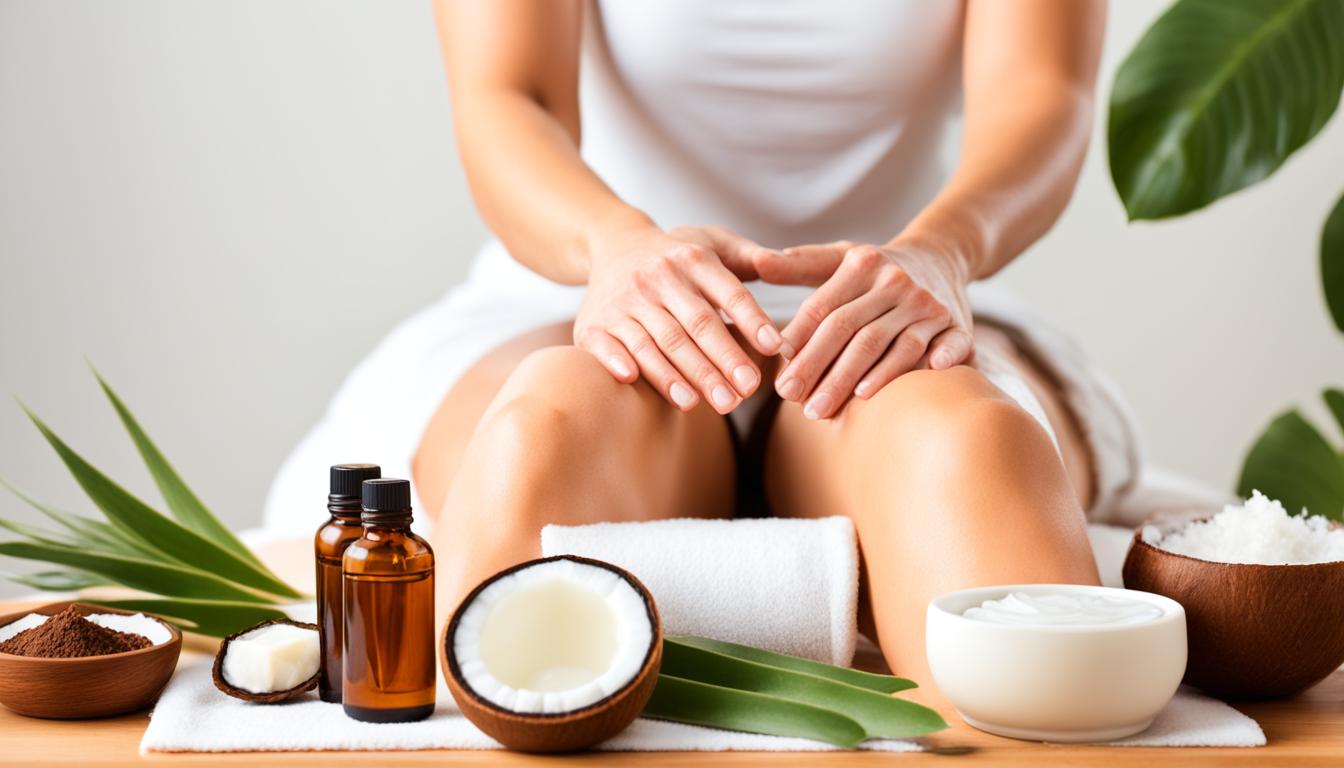Stretch marks, also known as striae, can be a common concern for many individuals. They often occur due to rapid changes in body size, such as during pregnancy or rapid weight gain or loss. While they pose no health risks, they can affect one’s self-confidence.
In this comprehensive guide, we will explore various methods and treatments to help reduce the appearance of stretch marks. From natural remedies to medical procedures, we’ll cover everything you need to know to address this common skin issue effectively. Whether you’re looking to fade existing stretch marks or prevent new ones from forming, this guide will provide you with the information and resources to help you achieve smoother, more even-toned skin.
What Causes Stretch Marks?
Stretch marks, also known as striae, are a common skin concern that can affect individuals of all ages and genders. Understanding the causes of stretch marks is crucial in finding effective ways to prevent and treat them.
The most common causes of stretch marks are sudden growth or weight gain. When the skin is stretched beyond its elastic limits, the underlying connective tissues may tear, resulting in the appearance of stretch marks. Common situations that can lead to stretch marks include:
- Pregnancy: During pregnancy, the rapid growth of the belly can cause stretch marks to form.
- Puberty: Adolescents experiencing growth spurts may develop stretch marks on various parts of their bodies.
- Rapid weight changes: Losing or gaining weight quickly can put stress on the skin, leading to the development of stretch marks.
- Use of certain steroid creams or tablets: Prolonged use of high-potency steroid creams or oral corticosteroids can increase the risk of stretch mark formation.
- Family history: If you have a family member with stretch marks, you may be genetically predisposed to developing them.
In rare cases, stretch marks can also be caused by a medical condition known as Cushing’s syndrome. This syndrome is characterized by an overproduction of cortisol, a hormone that can weaken the skin’s structure and make it more prone to tearing.

It’s important to note that while some factors increase the likelihood of developing stretch marks, not everyone who experiences them has any of these risk factors. Each individual’s skin is unique, and stretch mark formation can vary depending on genetics, skin type, and other factors.
Treatments for Stretch Marks
While stretch marks may fade over time, there are various treatments available to improve their appearance. These treatments can help reduce the visibility of stretch marks, although they may not completely remove them.
Retinoid Creams
Retinoid creams, such as tretinoin or hyaluronic acid, are commonly used to treat stretch marks. These creams work by promoting collagen production and improving skin elasticity, resulting in a smoother appearance. However, it’s important to note that retinoid creams should not be used during pregnancy.
Light or Laser Treatments
Light or laser treatments, including pulsed dye lasers or fractional lasers, can also be effective in reducing the appearance of stretch marks. These treatments work by targeting the discolored areas of the skin, stimulating collagen production, and promoting skin regeneration. However, it’s important to manage expectations as these treatments may not completely remove stretch marks.
Microdermabrasion
Microdermabrasion is a non-invasive treatment that involves the exfoliation of the skin’s outer layer. This process helps to reduce the appearance of stretch marks by stimulating collagen production and promoting skin cell turnover. However, like other treatments, microdermabrasion may not completely eliminate stretch marks.
It’s worth noting that these treatments for stretch marks are not typically available on the NHS and may need to be paid for. Additionally, results may vary depending on the individual and the severity of the stretch marks. Consulting with a dermatologist can provide personalized recommendations and guidance on the best course of treatment for improving the appearance of stretch marks.

How to Prevent Stretch Marks?
While it may not always be possible to prevent stretch marks entirely, maintaining a healthy weight is the best way to reduce the chances of developing them. There are no guaranteed methods to prevent stretch marks, but staying hydrated, eating a balanced diet, exercising regularly, and keeping the skin moisturised may help in preventing their formation.
Here are some tips to help prevent stretch marks:
- Maintain a healthy weight: Avoid rapid weight gain or loss, as this can stretch the skin and lead to stretch marks. Gradual weight changes are recommended.
- Stay hydrated: Drinking an adequate amount of water helps keep the skin hydrated and supple, reducing the risk of stretch marks.
- Eat a balanced diet: Focus on consuming foods rich in vitamins, minerals, and antioxidants, as they promote healthy skin elasticity. Include fruits, vegetables, whole grains, and lean proteins in your diet.
- Exercise regularly: Engaging in regular physical activity helps improve blood circulation, which can enhance the skin’s overall health and elasticity.
- Keep the skin moisturised: Apply a moisturising cream or lotion to keep the skin hydrated and supple. This can help improve its elasticity and reduce the likelihood of stretch marks.
Although it’s important to note that there’s no foolproof method for preventing stretch marks, these practices can help maintain the health and elasticity of your skin, minimizing the chances of stretch mark formation. Remember to consult with a healthcare professional or dermatologist for personalized advice and recommendations.

How to Get Rid of Stretch Marks?
Natural Remedies for Stretch Marks
While there is limited evidence to support the effectiveness of natural remedies for stretch marks, some individuals may find them helpful. These remedies often involve massaging natural oils onto the skin to improve its elasticity and appearance. Here are some commonly recommended natural remedies:
1. Almond Oil
Almond oil is known for its moisturizing properties and may help hydrate the skin, potentially reducing the appearance of stretch marks. Massage a few drops of almond oil onto the affected area daily to keep the skin moisturized and enhance its suppleness.
2. Cocoa Butter
Cocoa butter is a popular ingredient in skincare products due to its high concentration of fatty acids. Applying cocoa butter to stretch marks may help improve their appearance over time. Massage pure cocoa butter onto the affected area in circular motions for a few minutes every day.
3. Olive Oil
Olive oil is rich in antioxidants and healthy fats that may promote skin health and elasticity. Massaging olive oil onto stretch marks can help moisturize the skin and potentially reduce the visibility of stretch marks. Use extra virgin olive oil and apply it to the affected area regularly.
4. Vitamin E
Vitamin E is known for its skin-nourishing properties and may aid in the healing process. It is available in both oil and capsule form. Gently massage vitamin E oil onto the stretch marks or puncture a vitamin E capsule and apply the oil directly to the affected areas.
It is important to note that these natural remedies may not work for everyone, and results may vary depending on various factors, such as the severity of the stretch marks and individual skin characteristics. Additionally, it is advisable to consult with a dermatologist or healthcare professional before trying any natural remedies, especially if you have any pre-existing skin conditions or allergies.

| Natural Remedy | Key Benefits | Usage |
|---|---|---|
| Almond Oil | Moisturizes and improves suppleness of the skin | Massage a few drops onto the affected area daily |
| Cocoa Butter | Nourishes the skin and improves appearance over time | Massage onto the affected area in circular motions daily |
| Olive Oil | Rich in antioxidants, moisturizes the skin, and reduces visibility of stretch marks | Apply extra virgin olive oil to the affected area regularly |
| Vitamin E | Nourishes the skin and aids in the healing process | Massage vitamin E oil or apply oil from a capsule to the stretch marks |
Conclusion
Stretch marks are a common concern for many individuals, but it’s important to remember that they can fade over time. However, if you’re looking to improve their appearance, there are several effective treatments available. Dermatologists often recommend using retinoid creams, which can help reduce the visibility of stretch marks by promoting collagen production in the skin.
Another option is light or laser treatments, which can target the pigment in stretch marks and help them appear less noticeable. These procedures may require multiple sessions and should be performed by a qualified professional. Additionally, microdermabrasion, a non-invasive treatment that exfoliates the outer layer of skin, can also help improve the appearance of stretch marks.
While these treatments can be highly effective, it’s important to consult with a dermatologist to determine the best approach for your specific needs. They can provide personalized recommendations and suggest the most suitable treatment or combination of treatments to reduce stretch marks.
While natural remedies for stretch marks may not have strong scientific evidence supporting their effectiveness, some individuals may find them helpful. Massaging products like almond oil, cocoa butter, or vitamin E onto the skin can provide moisturization and potentially improve the appearance of stretch marks. However, it’s crucial to note that results may vary, and it’s always advisable to seek professional advice from a dermatologist.

